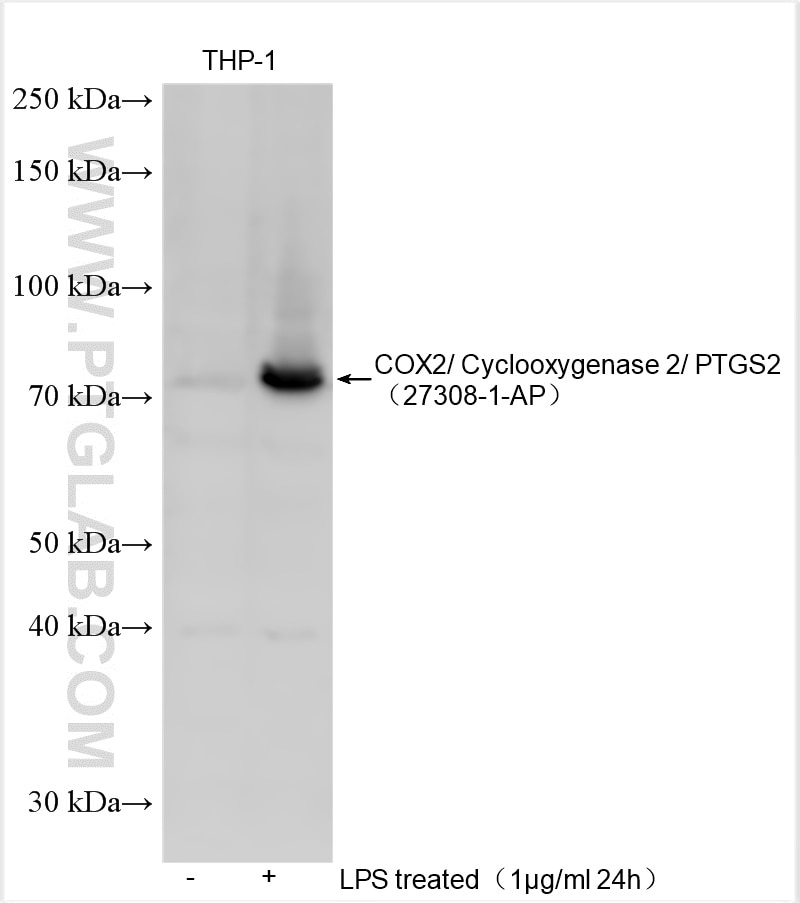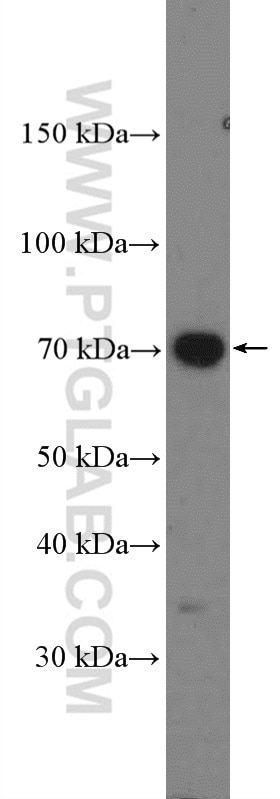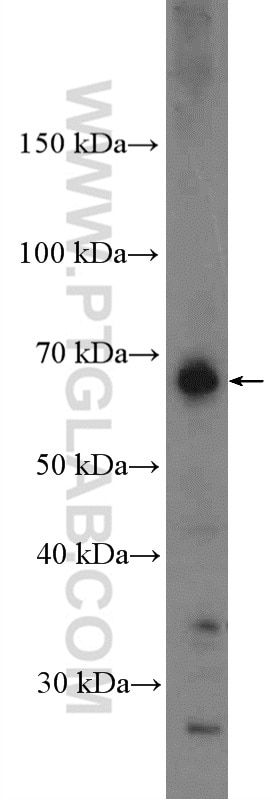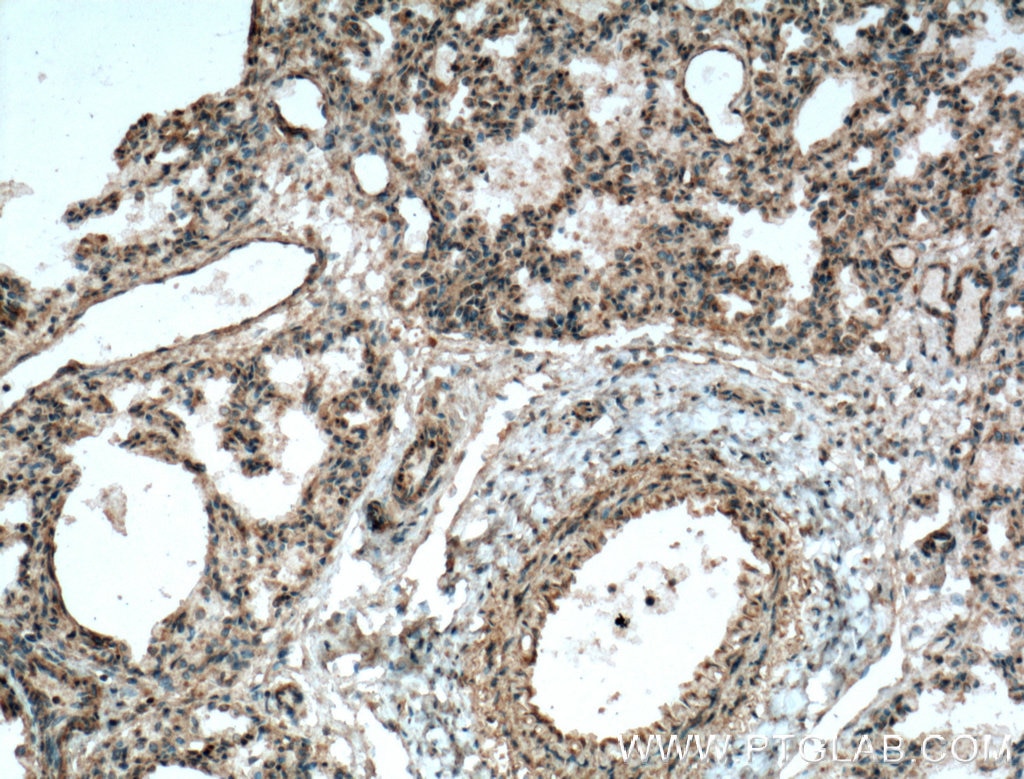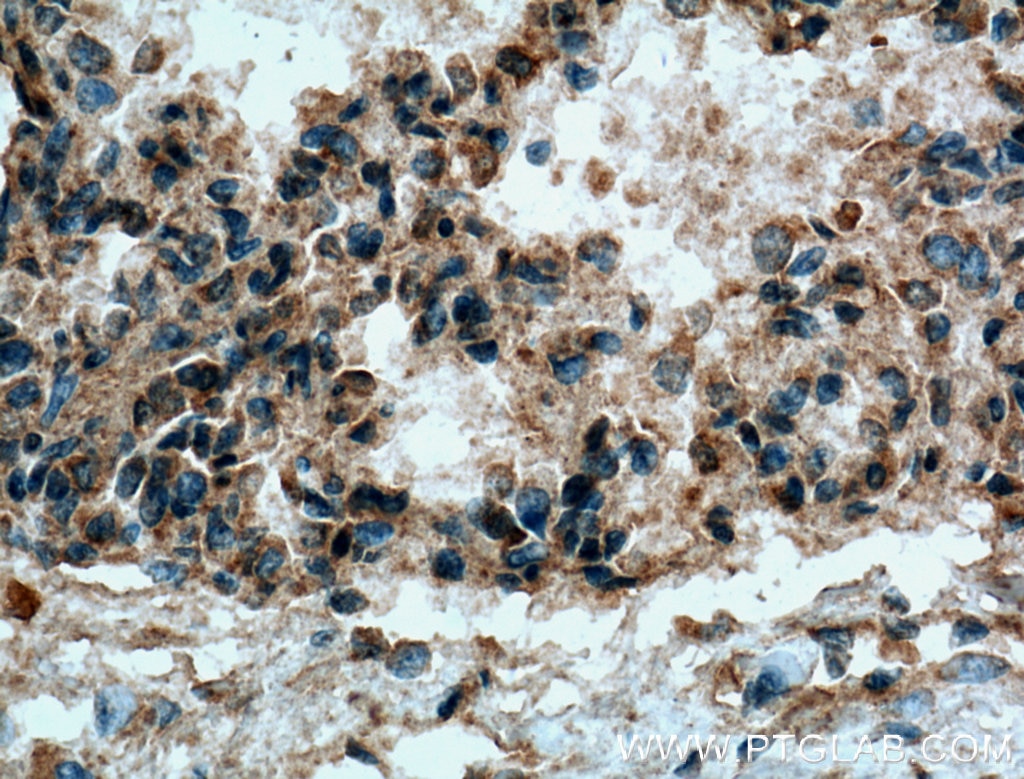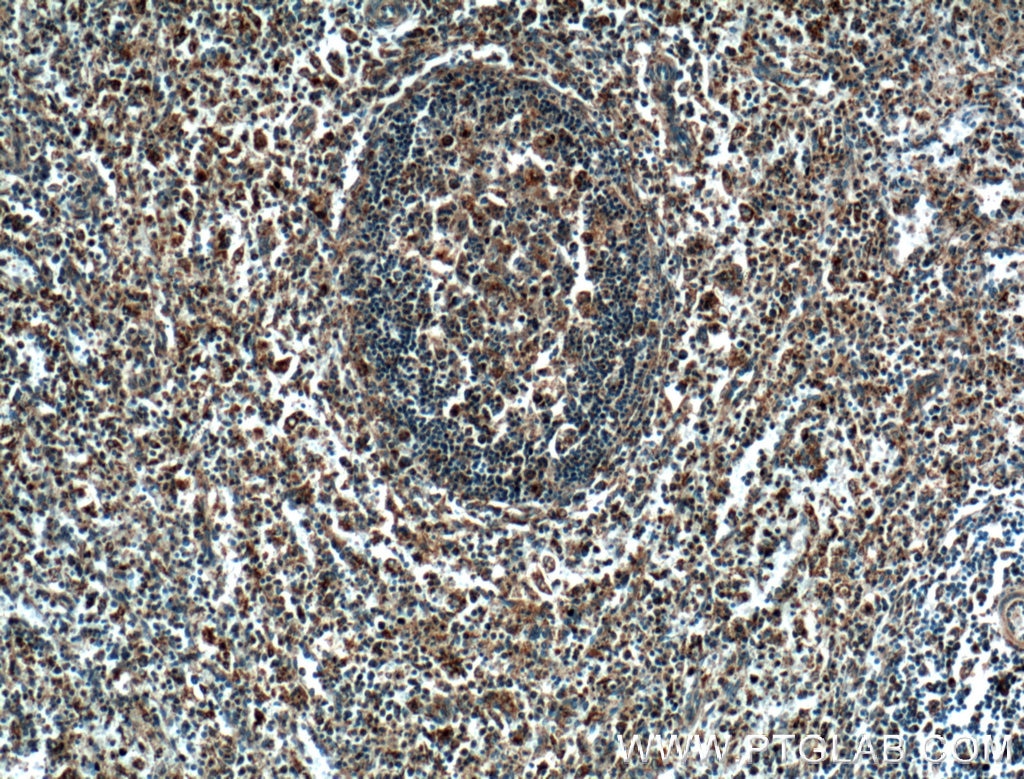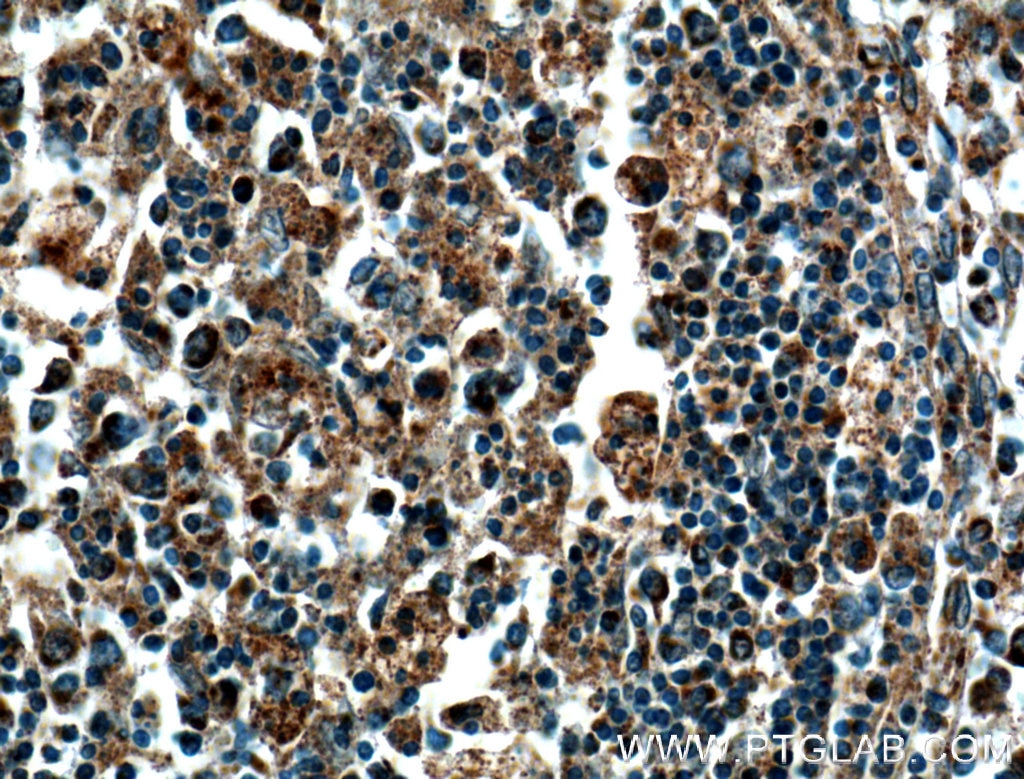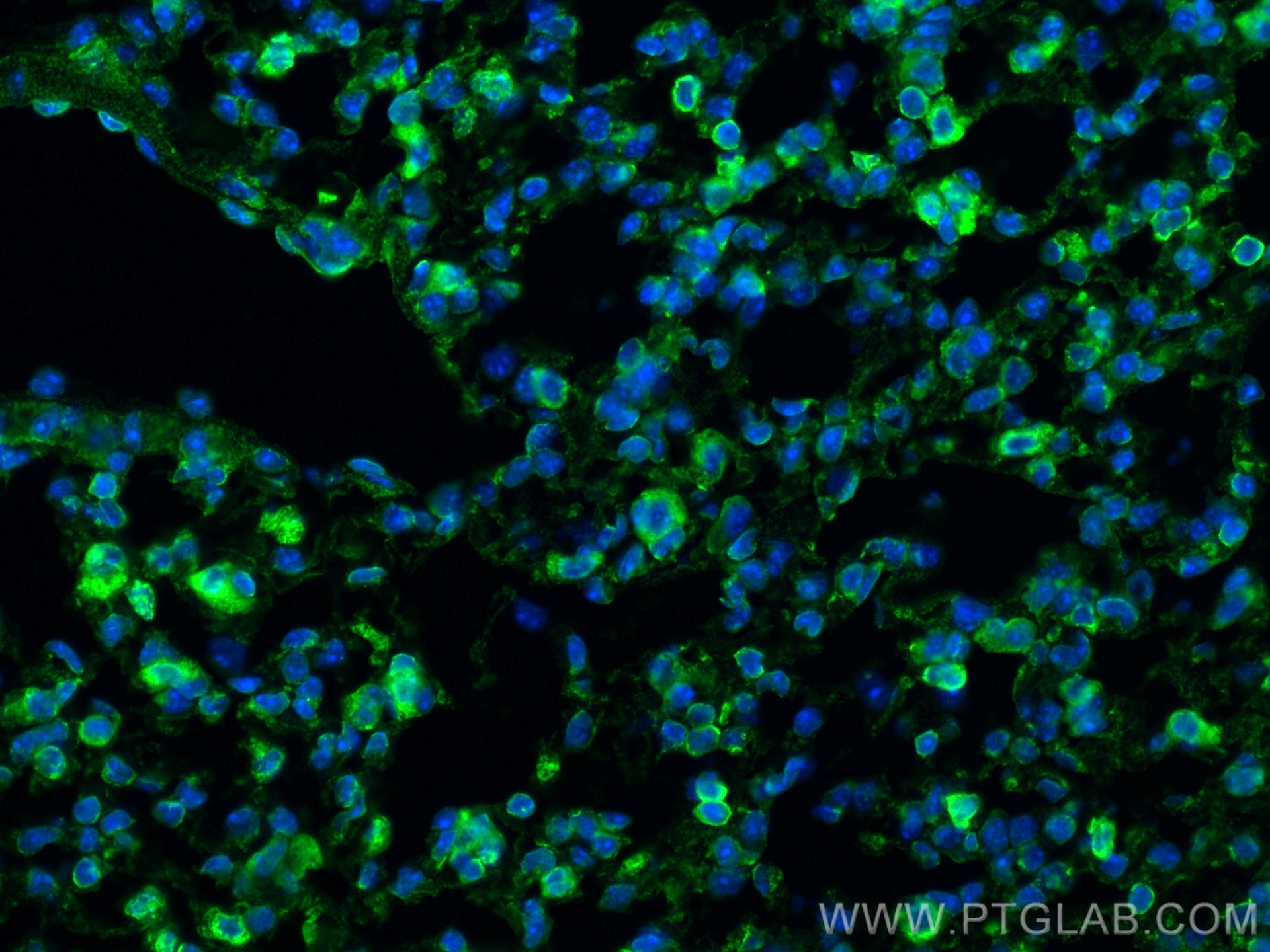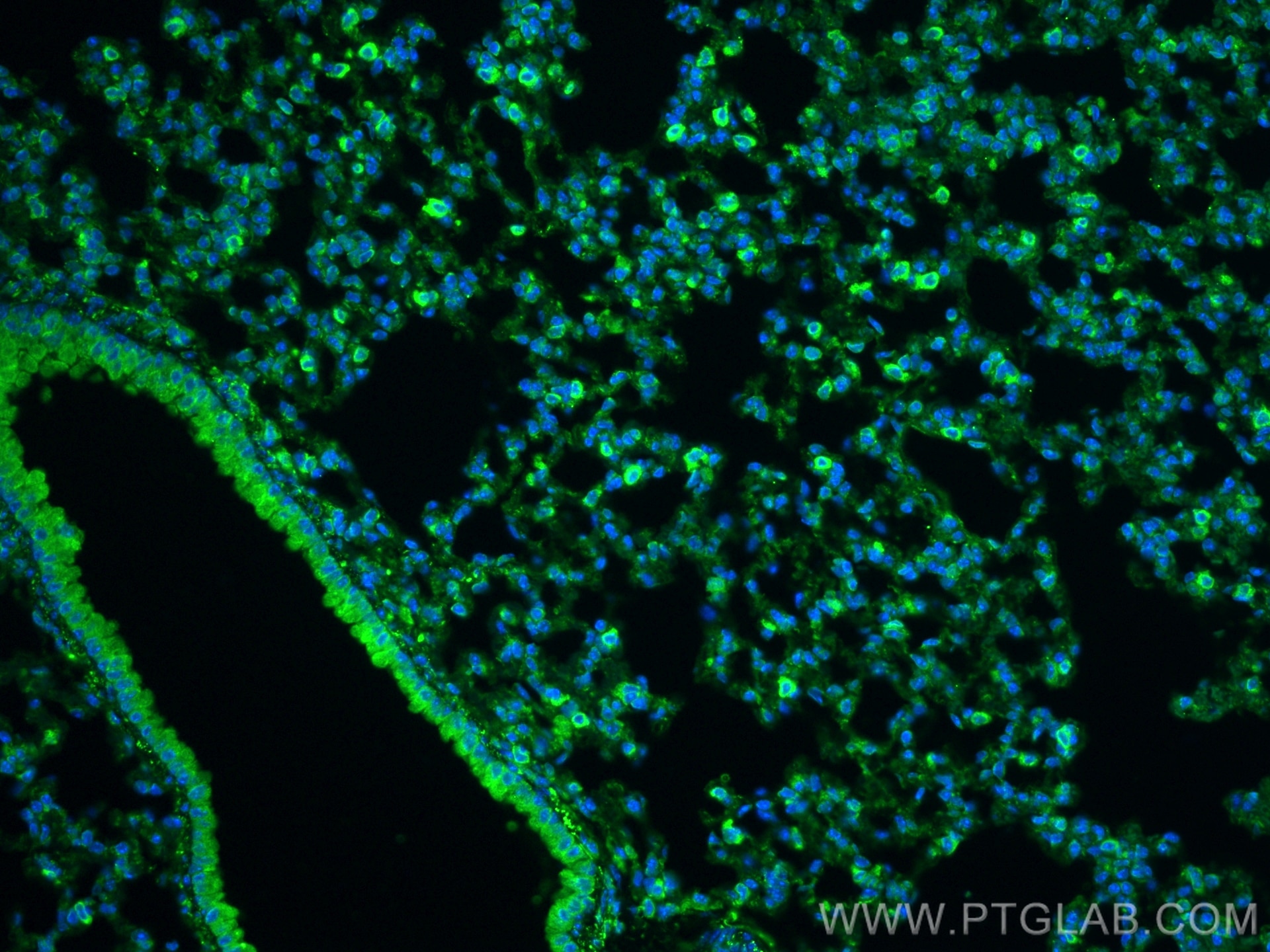- Featured Product
- KD/KO Validated
COX2/ Cyclooxygenase 2/ PTGS2 Polyklonaler Antikörper
COX2/ Cyclooxygenase 2/ PTGS2 Polyklonal Antikörper für WB, IHC, IF-P, ELISA
Wirt / Isotyp
Kaninchen / IgG
Getestete Reaktivität
human, Maus und mehr (3)
Anwendung
WB, IHC, IF-P, IP, ELISA
Konjugation
Unkonjugiert
Kat-Nr. : 27308-1-AP
Synonyme
Geprüfte Anwendungen
| Erfolgreiche Detektion in WB | A549-Zellen, Mauslungengewebe, THP-1-Zellen |
| Erfolgreiche Detektion in IHC | humanes Lungengewebe, humanes Milzgewebe Hinweis: Antigendemaskierung mit TE-Puffer pH 9,0 empfohlen. (*) Wahlweise kann die Antigendemaskierung auch mit Citratpuffer pH 6,0 erfolgen. |
| Erfolgreiche Detektion in IF-P | Mauslungengewebe |
Empfohlene Verdünnung
| Anwendung | Verdünnung |
|---|---|
| Western Blot (WB) | WB : 1:600-1:6000 |
| Immunhistochemie (IHC) | IHC : 1:100-1:400 |
| Immunfluoreszenz (IF)-P | IF-P : 1:50-1:500 |
| It is recommended that this reagent should be titrated in each testing system to obtain optimal results. | |
| Sample-dependent, check data in validation data gallery | |
Veröffentlichte Anwendungen
| KD/KO | See 3 publications below |
| WB | See 106 publications below |
| IHC | See 12 publications below |
| IF | See 14 publications below |
| IP | See 1 publications below |
Produktinformation
27308-1-AP bindet in WB, IHC, IF-P, IP, ELISA COX2/ Cyclooxygenase 2/ PTGS2 und zeigt Reaktivität mit human, Maus
| Getestete Reaktivität | human, Maus |
| In Publikationen genannte Reaktivität | human, Hausschwein, Hund, Maus, Ratte |
| Wirt / Isotyp | Kaninchen / IgG |
| Klonalität | Polyklonal |
| Typ | Antikörper |
| Immunogen | COX2/ Cyclooxygenase 2/ PTGS2 fusion protein Ag26174 |
| Vollständiger Name | prostaglandin-endoperoxide synthase 2 (prostaglandin G/H synthase and cyclooxygenase) |
| Berechnetes Molekulargewicht | 604 aa, 68 kDa |
| Beobachtetes Molekulargewicht | 69 kDa |
| GenBank-Zugangsnummer | BC013734 |
| Gene symbol | COX2/PTGS2 |
| Gene ID (NCBI) | 5743 |
| Konjugation | Unkonjugiert |
| Form | Liquid |
| Reinigungsmethode | Antigen-Affinitätsreinigung |
| Lagerungspuffer | PBS with 0.02% sodium azide and 50% glycerol |
| Lagerungsbedingungen | Bei -20°C lagern. Nach dem Versand ein Jahr lang stabil Aliquotieren ist bei -20oC Lagerung nicht notwendig. 20ul Größen enthalten 0,1% BSA. |
Hintergrundinformationen
COX2 is an enzyme involved in the synthesis of prostaglandins from arachidonic acid.
1. What is the molecular weight of COX2?
The fully N-glycosylated PTGS2 is 72-74 kDa and the aglycosylated is 66 kDa (PMID:19656660). It also
expresses a band of 39 kDa after unspecific cleavage (PMID:17509125). The 50 kDa band of fragmented
PTGS2 has also previously been detected in AD brains (PMID:14724276).
2. Is COX2 post-translationally modified?
COX2 is a subject of post-translational modifications, including phosphorylation, glycosylation, and
s-nitrosylation (PMID: 28939645).
3. What is the difference between COX1, COX2, and COX3?
There are three isoenzymes that have cyclooxygenase activity: COX1, COX2, and COX3. While COX1
is a ubiquitously expressed constitutive enzyme, expression of COX2 is generally low but can be rapidly
induced by various stimuli (as part of infection and inflammatory response) and is controlled by the
transcription factor NFκB. COX3 is an alternative splice variant of COX1 enzyme and is considered
non-functional in humans.
4. I cannot detect COX2 in my sample during western blotting.
Unlike COX1, COX2 expression is inducible by a variety of stimuli including certain growth factors, cytokines,
and proinflammatory stimuli. COX2 basal expression levels may be very low in unstimulated cells. Additionally,
the COX2 half-life time is short and after stimulation, COX2 protein can be quickly degraded to basal levels
(PMID: 10966456), which should be taken into account during experimental design.
5. What is the role of COX2 in cancer?
COX2 is often upregulated in various cancer types and increased expression of COX2 is associated with
greater angiogenesis of solid tumors, increased invasion, and metastasis, as well as decreased host immunity.
6. What is subcellular localization of COX2?
Both COX1 and COX2 are present in the endoplasmic reticulum (ER) and nuclear envelope (PMID: 9545330),
but COX2 has been reported to be more enriched in the nuclear envelope compared to COX1 (PMID: 7738031).
Protokolle
| PRODUKTSPEZIFISCHE PROTOKOLLE | |
|---|---|
| WB protocol for COX2/ Cyclooxygenase 2/ PTGS2 antibody 27308-1-AP | Protokoll herunterladen |
| IHC protocol for COX2/ Cyclooxygenase 2/ PTGS2 antibody 27308-1-AP | Protokoll herunterladenl |
| IF protocol for COX2/ Cyclooxygenase 2/ PTGS2 antibody 27308-1-AP | Protokoll herunterladen |
| STANDARD-PROTOKOLLE | |
|---|---|
| Klicken Sie hier, um unsere Standardprotokolle anzuzeigen |
Publikationen
| Species | Application | Title |
|---|---|---|
Nucleic Acids Res MEN1 is a regulator of alternative splicing and prevents R-loop-induced genome instability through suppression of RNA polymerase II elongation | ||
Small M2 Macrophage Membrane-Mediated Biomimetic-Nanoparticle Carrying COX-siRNA Targeted Delivery for Prevention of Tendon Adhesions by Inhibiting Inflammation | ||
ACS Appl Mater Interfaces Programmable Polymeric Microneedles for Combined Chemotherapy and Antioxidative Treatment of Rheumatoid Arthritis. | ||
Redox Biol Topical hypochlorous acid (HOCl) blocks inflammatory gene expression and tumorigenic progression in UV-exposed SKH-1 high risk mouse skin. | ||
Int J Biol Macromol Flammulina velutipes polysaccharide exerts immunomodulatory function involving RSAD2 to regulate the NF-κB/MAPK signaling pathway in RAW264.7 macrophage cells and in mouse spleen cells | ||
J Control Release Combination of mitochondria impairment and inflammation blockade to combat metastasis |
Rezensionen
The reviews below have been submitted by verified Proteintech customers who received an incentive for providing their feedback.
FH Mei-xin (Verified Customer) (09-29-2025) | The antibody shows outstanding specificity, producing only one distinct band with no detectable background or additional bands.
|
FH Ryan (Verified Customer) (02-27-2019) | Tissue was fixed in PFA with no additional antigen retrieval. Co-localisation with microglia based on known markers (not shown).
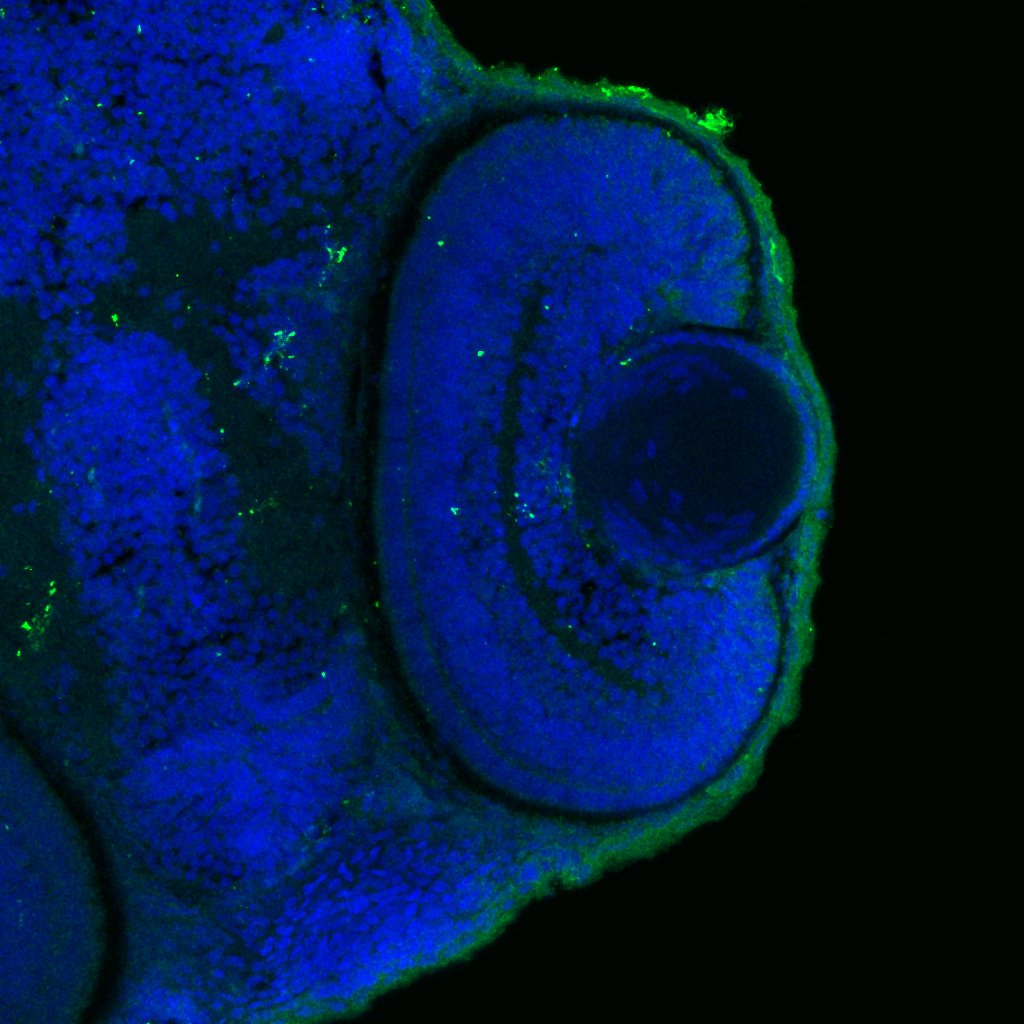 |
